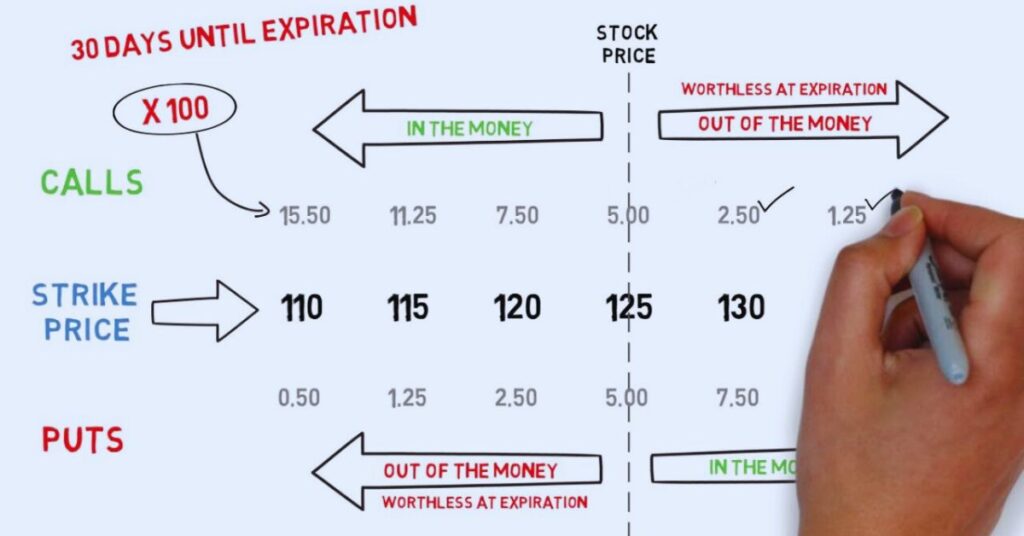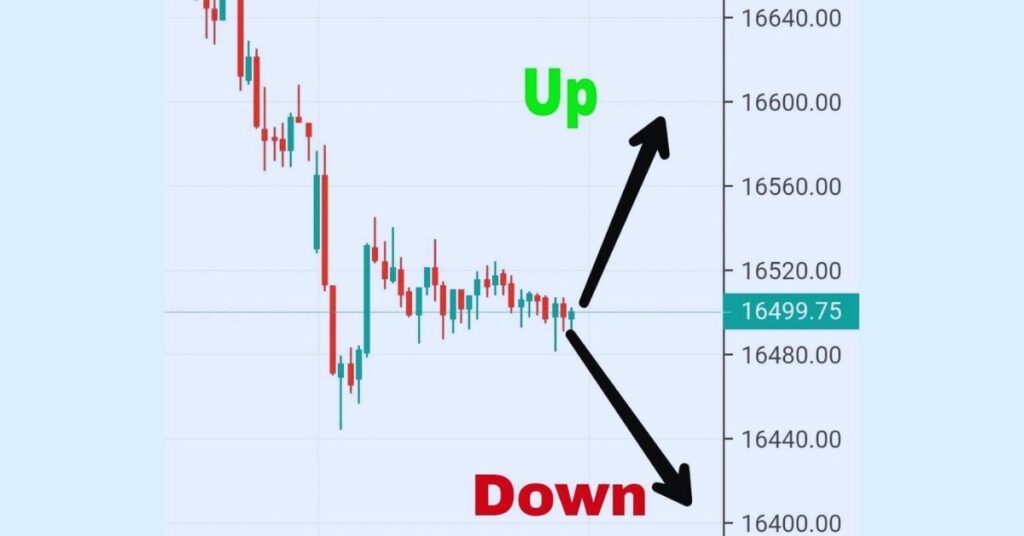How To do options trading, open a brokerage account and understand the basics of options contracts. Then, choose your strategy and execute trades.
Options trading allows investors to hedge risks or speculate on stock price movements. It involves buying and selling options contracts, which give the right, but not the obligation, to buy or sell a security at a predetermined price. There are two main types of options: calls and puts.
Calls allow you to buy a stock, while puts allow you to sell a stock. Traders use various strategies based on market predictions, including covered calls, straddles, and spreads. Successful options trading requires research, strategy, and careful risk management. Always stay informed about market trends and continuously refine your approach.

Table of Contents
Introduction To Options Trading
Options trading can be an exciting way to invest. It’s all about contracts. These contracts give you the right to buy or sell stocks. This happens at a set price before a certain date. It’s different from buying stocks directly. Let’s learn more about options trading.
What Are Options?
Options are special contracts. They let you buy or sell stocks. This happens at a set price before a certain date. There are two main types of options. They are calls and puts. Understanding these is key to options trading.
| Type | Description |
|---|---|
| Call Option | Gives the right to buy a stock. |
| Put Option | Gives the right to sell a stock. |
Types Of Options
There are different types of options. Each has its own use. The two main types are American and European options.
- American Options: Can be exercised any time before expiration.
- European Options: Can only be exercised on the expiration date.
Knowing the types of options helps in making smart trades. It helps you understand your rights. It also helps in planning your strategy.
Getting Started

Options trading can be an exciting way to invest. Understanding the basics is crucial. This section will guide you through the initial steps. Let’s break it down into simple, actionable steps.
Setting Up A Brokerage Account
First, you need a brokerage account. Here’s how to set one up:
- Research Brokers: Compare different brokers. Look for low fees and good support.
- Sign Up: Visit the broker’s website and complete the application.
- Verify Identity: Provide necessary documents like ID and proof of address.
- Fund Your Account: Transfer money into your brokerage account.
Check if the broker offers a demo account. This allows you to practice without risk.
Understanding Terminology
Knowing the language of options trading is key. Here are some important terms:
| Term | Definition |
|---|---|
| Call Option | The right to buy an asset at a set price. |
| Put Option | The right to sell an asset at a set price. |
| Strike Price | The price at which an option can be exercised. |
| Expiration Date | The date when the option contract expires. |
| Premium | The cost to buy the option. |
Familiarize yourself with these terms. Understanding them will make trading easier.
Options trading involves risks. Start with small trades to learn the ropes. Keep educating yourself as you go.
Basic Strategies
Options trading offers many strategies. Some strategies are simple, while others are complex. Knowing the basics helps you start trading with confidence.
Buying Calls And Puts
Buying calls and puts is the simplest form of options trading. A call option gives you the right to buy a stock at a specific price. You profit if the stock price goes up. A put option gives you the right to sell a stock at a specific price. You profit if the stock price goes down.
- Call Option: Buy if you think the stock will go up.
- Put Option: Buy if you think the stock will go down.
Both calls and puts let you leverage your investment. This means you can control more shares with less money. But, they come with risks. If the stock doesn’t move as expected, you can lose the premium paid.
Covered Calls
A covered call involves owning the stock and selling a call option. This strategy provides income from the option premium. The premium is the price paid by the option buyer. This works well if you expect the stock price to stay flat or rise slightly.
| Advantage | Disadvantage |
|---|---|
| Earn income from the option premium | Stock may be called away if price rises |
| Reduces overall risk | Limited profit potential |
Covered calls offer a balance of risk and reward. They are popular among conservative traders.
Advanced Techniques
Mastering options trading goes beyond basic strategies. Advanced techniques help maximize profits and minimize risks. This section explores key methods like spreads, straddles, and iron condors.
Spreads And Straddles
Spreads involve buying and selling multiple options. These reduce risk and cost.
- Bull Call Spread: Buy a call option at a lower strike price. Sell a call option at a higher strike price.
- Bear Put Spread: Buy a put option at a higher strike price. Sell a put option at a lower strike price.
Both strategies cap your profits but limit your risks.
Straddles involve buying a call and a put option. Both should have the same strike price and expiration date.
- Long Straddle: Profit from large price movements in either direction.
- Short Straddle: Profit from little or no price movement.
Straddles are useful in highly volatile markets.
Iron Condors
Iron Condors are complex strategies that involve four options. Two calls and two puts.
| Component | Description |
|---|---|
| Buy Lower Strike Put | Limits downside risk |
| Sell Higher Strike Put | Generates premium |
| Sell Lower Strike Call | Generates premium |
| Buy Higher Strike Call | Limits upside risk |
Iron condors profit from low volatility. The goal is for the stock price to stay between the inner strikes. These advanced techniques require practice and precision. They can significantly improve your options trading success.
Risk Management
Risk management is crucial in options trading. It helps traders protect their investments and minimize potential losses. Proper risk management can make the difference between success and failure in options trading.
Setting Limits
One essential aspect of risk management is setting limits on your trades. Limits help control the amount of money you risk. These include both stop-loss limits and profit-taking limits.
- Stop-Loss Limits: Set a maximum loss point for each trade.
- Profit-Taking Limits: Decide in advance when to take profits.
Setting these limits ensures you do not make impulsive decisions. It also helps you stay disciplined and stick to your trading plan.
Diversifying Portfolio
Another key strategy in risk management is diversifying your portfolio. Diversification reduces the risk of significant losses.
| Type of Option | Risk Level |
|---|---|
| Call Options | Moderate |
| Put Options | Moderate |
| Covered Calls | Low |
| Spreads | Low |
By spreading your investments across various types of options, you can manage risk better. This way, a loss in one trade does not wipe out your entire portfolio. Risk management in options trading involves setting limits and diversifying your portfolio. These strategies help protect your investments and minimize losses.

Resources And Tools
Options trading can be complex. Using the right resources and tools makes it easier. This section covers educational materials and trading platforms.
Educational Materials
Understanding options trading starts with good educational materials. These resources build your foundation:
- Books: Books by experts provide in-depth knowledge. Examples include “Options as a Strategic Investment” by Lawrence McMillan.
- Online Courses: Websites like Udemy offer courses. These can range from beginner to advanced levels.
- Webinars: Many brokers and platforms host webinars. They cover various topics and are often free.
- Blogs and Articles: Reputable financial websites have blogs. They often update with the latest trends and tips.
- Forums: Forums like Reddit have active communities. You can ask questions and share experiences.
Trading Platforms
Choosing the right trading platform is essential. It affects your trading experience and success. Key features to look for include:
| Feature | Description |
|---|---|
| Ease of Use | Look for platforms with a user-friendly interface. |
| Analytical Tools | Good platforms offer charts and graphs. |
| Real-Time Data | Ensure the platform provides real-time market data. |
| Mobile Access | Mobile apps allow trading on the go. |
| Customer Support | Responsive support helps resolve issues quickly. |
Popular trading platforms include:
- Thinkorswim: Known for its advanced tools and educational resources.
- Robinhood: Ideal for beginners with its simple interface.
- Interactive Brokers: Offers low fees and comprehensive tools.
- TD Ameritrade: Combines ease of use with robust features.
- ETRADE: Provides excellent customer support and educational content.
How to Do Options Trading: Frequently Asked Questions
What Is Options Trading?
Options trading involves buying and selling contracts that give the right to buy or sell an asset at a set price.
How Do Options Work?
Options contracts grant the right, but not the obligation, to buy or sell an asset at a predetermined price.
What Are The Types Of Options?
There are two main types: call options, which allow buying, and put options, which allow selling an asset.
Why Trade Options?
Options can hedge risk, increase leverage, and provide more strategic investment opportunities compared to traditional stocks.
Is Options Trading Risky?
Yes, options trading carries significant risk and requires understanding market movements and strategies to minimize potential losses.
Conclusion
Mastering options trading can boost your investment strategy. Start small, stay informed, and practice regularly. Always manage risks carefully. With patience and discipline, you can succeed in options trading. Remember, continuous learning is key. Happy trading!













Leave a Reply